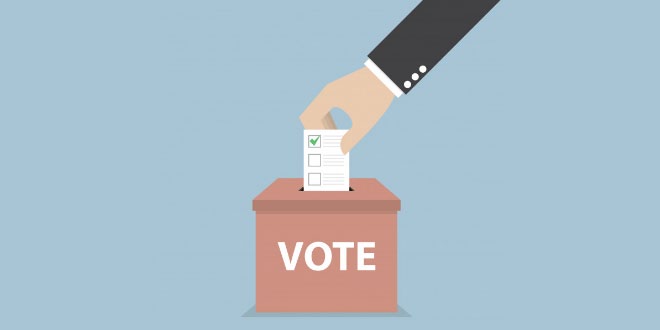Question: Write a brief note on state parties in India.
Answer: Parties which have their presence only in the state level are called State parties. These include parties with national level political organisation, but which have succeeded in only a few states. Samajwadi party, Rashtriya Janata Dal, Samata Party are examples of state parties with a national presence.
Most state parties consciously maintain a strong state-specific identity, like Biju Janata Dal and the Mizo National Front.
Over the last few decades, state or regional parties has grown considerably. Since 1996, every government at the national level has been a coalition of parties headed usually by one national party. This has led to strengthening of the federal structure of our government.
Question: Write a brief note on Bharatiya Janata Party and the Bahujan Samaj Party.
Answer: Bharatiya Janata Party: The Bharatiya Janata Party was started in 1980, from the erstwhile Bharatiya Jana Sangh. Its support base grew rapidly in the 1990s. Earlier, it was limited to the north and western parts of the country, but now it has a nearly pan-Indian base.
Ideologically, the party is rightist. It wants to build a strong, modern India by drawing inspiration from ancient culture and values. It wants full territorial and political integration of Jammu and Kashmir with India, a uniform civil code for all people living in the country irrespective of religion, and ban on religious conversions.
Bahujan Samaj Party: The Bahujan Samaj Party was founded in 1984. It has its main base in the state of Uttar Pradesh and substantial presence in neighboring states like Madhya Pradesh, Chhattisgarh, Uttarakhand, Delhi and Punjab. this party formed governments in Uttar Pradesh several times by taking the support of different parties at different times.
Ideologically, the party seeks to represent and secure power for the bahujan samaj which includes the dalits, adivasis, OBCs and religious minorities.
Question: What are the different types of political party system?
Answer: There are three major systems in political parties. They are:
- The One-party System: In China, only the Communist Party is allowed to rule. This is not a good option since it is not a democratic system. A democratic system must have at least two parties and each party must have a fair chance of forming the government.
- The Two-party System: Although there may be many parties in the country, only the two largest ones have a realistic chance of forming the government. This is seen in the USA.
- The Multi-party System: Several parties compete for power and each has a chance of coming into power on its own, or in alliance with others. We see this in India. In the 2004 general elections, there were three major alliances, or fronts. The National Democratic Alliance, the United Progressive Alliance and the Left Front.
We cannot say that any of these systems is better than the other, since these systems evolve over time, and the social and cultural norms of each country play a major role in the kind of system that evolves. The multi-party system in India is the result of the diversity of culture seen in the country.
Question: Write a brief note on the Indian national congress.
Answer: The Indian National Congress was started in 1885. It was the dominant party of Indian politics at the national level and to a large extent at the state level for a long time. Since 1989 its influence has declined, but it still maintains a presence across the entire country. The party has seen many splits over the years.
Ideologically, the party is centrist. It is neither leftist nor rightist. It supports secularism and economic growth with a human face, especially towards the weaker sections of the society.
 Class Notes NCERT Solutions for CBSE Students
Class Notes NCERT Solutions for CBSE Students





